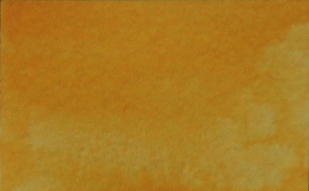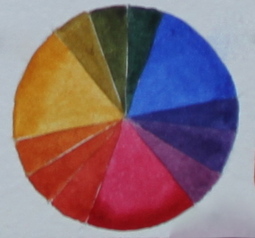Warm Yellows
There are many warm yellows to choose from including Cadmium Yellow Deep, Hansa Yellow Deep, New Gamboge, Arylide Yellow Deep and Indian yellow. Quinacridone Gold (PO49) is a warm, transparent yellow, more neutral than Cadmium Yellow Deep. It creates wonderful natural greens when mixed with Ultramarine. Hansa Yellow Deep is a less expensive pigment than cadmium, and very pure in hue. Choose Cadmium Yellow Deep for an opaque yellow, New Gamboge for a transparent yellow and Quinacridone Gold for a glowing transparent alternative to Raw Sienna. Mix Ultramarine Blue with any of these yellows for natural neutralised greens. Note - only Daniel Smith make Quinacridone Gold using genuine PO49. It is worth finding, but don't bother with other brand hues.
(For more on a primary yellow see my Blog entry here. For more on yellows from a range of brands see my Blog entry here)
(For more on a primary yellow see my Blog entry here. For more on yellows from a range of brands see my Blog entry here)
Cadmium Yellow Deep

Cadmium Yellow Deep. Daniel smith watercolour
Cadmium Yellow Deep is an opaque to semi-opaque colour. I personally prefer a transparent warm yellow but this is a popular and reliable pigment.
Cadmium Yellow Deep in mixes

Cadmiu Yellow Deep mixed with Ultramarine, Cadmium Scarlet, Phthalo Green and Indigo.
Useful for mixing colours that cover what is underneath to some extent.
Neutral greens - Cadmium Yellow Deep + Ultramarine

Cadmium Yellow Deep (left) mixed with Ultramarine (right).
You can see the strength of these neutral greens created with Cadmium Yellow Deep, a warm yellow, and Ultramarine Blue, a warm blue.
Neutral greens - Cadmium Yellow Deep + Ultramarine

Cadmium Yellow Deep (left) mixed with Ultramarine (right).
Cadmium Yellow Deep mixed with Ultramarine will give the greatest range of neutralised greens - very useful for the Australian bush. Here with more water for lighter tones.
Neutral greens - Cadmium Yellow Deep + Cobalt

Cadmium Yellow Deep (left) + Cobalt Blue (right).
Some artists use Cobalt as their 'primary' blue, but I prefer Ultramarine as it has more intensity and greater tinting strength.
Pure Oranges - Cadmium Yellow Deep+ Cadmium Red Medium

Cadmium Yellow Deep (left) mixed with Cadmium Red Medium (right).
Pure Oranges are created with this combination of a warm yellow and a warm red, as there is no blue present.
Neutral purples - Cadmium Yellow Deep + Imperial Purple

Cadmium Yellow Deep (left) mixed with Daniel Smith Imperial Purple (right).
A mid purple is the opposite of a mid yellow. this is a warm yellow so the purple doesn't produce greys but rather reduced or neutralised purples and brownish hues.
Quinacridone Gold

Quinacridone Gold PO49. Daniel Smith watercolour.
Quinacridone Gold is a very versatile warm, transparent, neutral yellow. This is a personal favourite as it makes such wonderful greens for painting the Australian bush. There are many brighter warm yellows such as New Gamboge, Indian Yellow and Hansa Yellow Deep that will make brighter greens and oranges in a mix.
Quinacridone Gold, Ultramarine and Quinacridone Rose triad.

Quinacridone, Ultramarine and Quinacridone Rose triad.
As part of a primary triad, a warm yellow such as Quinacridone gold is very useful. The resulting mixes work for natural colours - strong, lifelike greens, pure purples and lovely oranges. The colours also neutralise each other to create greys and neutrals.
Qunacridone Gold and Phthalo Blue

Quinacridone Gold mixed with Phthalo Blue.
A huge range of interesting greens is possible using Phthalo Blue and Quinacridone Gold.
Neutral greens - Quinacridone Gold + Ultramarine

Quinacridone gold (left) mixed with Ultramarine (right).
Very similar to the greens created with Cadmium Yellow Deep above, but Quinacridone Gold is more transparent than a cadmium yellow
Quinacridone Gold and Phthalo Green

Quinacridone Gold mixed with Phthalo Green.
This combination creates a range of useful medium to bright greens.
Pure oranges - Cadmium Yellow Medium + Scarlet Lake

Cadmium Yellow Medium (left) mixed with Winsor & Newton Scarlet Lake (right).
There is no blue in either of these colours so the resulting oranges are pure and bright.